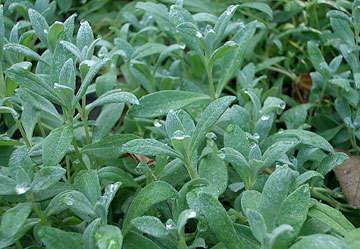Salinity Management Guide

What's needed for water of elevated salinity
When selecting an irrigation system for applying water of elevated salinity, factor in the following:
- If the plants to be irrigated are of a species known to have leaves that are sensitive to salt, consider converting sprinkler heads to low-angle nozzles if possible, so that water is less likely to land on the plants' leaves. Or, choose a method of irrigation that applies water to the soil rather than to leaves. If for other reasons sprinklers are the optimal type of system, consider replacing the most salt-sensitive species with ones that are relatively insensitive.
- Consider using one or more of the following irrigation strategies, each of which can help to minimize the effects of waterborne salt on plants. These strategies result from numerous research studies conducted during the past several decades, most involving crops and a few involving landscape plants:
- Avoid irrigating frequently and for short periods of time. Instead, irrigate less often and for longer periods of time. Salts in irrigation water will then be less likely to accumulate in the soil near the plants' roots.
- Avoid slow, rotating sprinklers. Such sprinklers would allow drying between cycles and consequently have the same effect as irrigating frequently and for short periods of time.
- Avoid irrigating when it is hot, dry, or windy. These circumstances tend to cause cycles of wetting and drying within the soil. The effect would be the same as irrigating often and for brief periods of time.
- Irrigate when it is cooler, such as at night or in the early morning. That's when evaporation is at a minimum and plants' leaves less readily absorb salt.
- If possible, after a period of sprinkling, move the sprinklers downwind and continue for a while. This will wash off the salt deposited on plants' leaves by evaporation of water droplets conveyed downwind from the sprinklers located upwind.
- If water of low salinity is also available at the site, irrigate with this water for five minutes before and after irrigating with the water of higher salinity. Such irrigation will reduce the accumulation of salt.
| « Previous page | Next page » |